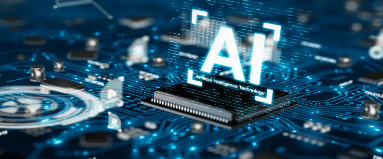The synergy between robotics and artificial intelligence (AI) is transforming the technological landscape. While AI endows machines with the ability to think, learn, and adapt, robotics engineering focuses on designing and constructing the physical structures that bring these intelligent behaviors to life. The integration of AI and robotics is fueling advancements across industries, from healthcare and manufacturing to autonomous transportation and space exploration. Let’s dive deep into how robotics engineering plays a pivotal role in shaping the future of AI development.
The Convergence of Robotics and AI
Bringing Intelligence to Physical Systems
Robotics engineering provides the hardware framework—sensors, actuators, and mechanical systems—while AI supplies the software intelligence that enables decision-making and learning. Together, they create systems capable of performing complex tasks autonomously, adapting to changing environments, and even collaborating with humans.
This convergence is key to developing intelligent robots that can navigate unknown terrains, manipulate delicate objects, or assist in surgeries with unparalleled precision. Without the mechanical innovation of robotics engineering, AI’s capabilities would remain confined to virtual environments.
Designing Robots for Autonomous Decision-Making
Hardware That Supports Smart Actions
To support AI-driven autonomy, robotics engineers must design machines capable of dynamic movement, environmental perception, and fine motor control. This involves integrating sophisticated sensor arrays—such as LiDAR, ultrasonic sensors, cameras, and tactile sensors—that feed real-time data into AI algorithms.
Moreover, robotics engineering optimizes structures for flexibility, energy efficiency, and durability. Whether it’s an autonomous drone navigating urban landscapes or a robotic arm assembling microchips, the mechanical design must align seamlessly with AI’s decision-making processes.
Robotics Engineering in Machine Learning and Adaptability
Creating Robots That Learn from Experience
AI development in robotics heavily relies on machine learning, where robots improve their performance through experience. Robotics engineers must create platforms that facilitate continuous learning, enabling systems to adapt without human intervention.
Examples include robots in warehouses learning optimal paths for goods transportation or agricultural robots adjusting techniques based on crop variations. The mechanical systems must not only handle varied tasks but also provide feedback mechanisms that AI can use to refine strategies over time.
Human-Robot Interaction (HRI) Engineering
Designing Collaborative Systems
Human-robot interaction is a vital area where robotics engineering influences AI development. Engineers must design robots that can safely and intuitively collaborate with humans, whether on manufacturing floors, in hospitals, or even at home.
Key elements include ergonomic designs, soft robotics (robots made with flexible, human-friendly materials), and AI-driven communication interfaces that interpret human gestures, speech, and emotions. Successful HRI engineering enhances trust, usability, and the effectiveness of collaborative robots (cobots).
Challenges in Robotics-AI Integration
Balancing Complexity and Efficiency
Despite significant progress, integrating AI with robotics presents numerous engineering challenges. Complex AI models often require high computational resources, which can be difficult to embed within mobile or lightweight robots. Engineers must innovate to create compact, energy-efficient processors and optimize software to run on constrained hardware.
Additionally, real-world environments are unpredictable. Robotics engineers must design systems resilient to variations, obstacles, and failures, ensuring robust performance under diverse conditions.
Simulation and Digital Twins
Virtual Testing Grounds
Robotics engineering increasingly leverages simulation technologies and digital twins—virtual replicas of physical robots. These tools enable engineers to test AI algorithms in simulated environments before deployment, saving time and resources.
By modeling mechanical properties, environmental factors, and AI behaviors, simulations accelerate development cycles and improve the safety and reliability of AI-robot systems. This is especially critical in fields like autonomous driving and surgical robotics, where errors can have serious consequences.
Applications Transforming Industries
From Factories to Space
- Manufacturing: Robotic arms equipped with AI are revolutionizing assembly lines with precision, adaptability, and speed.
- Healthcare: Surgical robots perform delicate procedures, guided by AI that assists with imaging, decision-making, and precision movements.
- Logistics: Autonomous delivery robots and drones navigate complex environments, optimizing routes and schedules through AI.
- Agriculture: Intelligent robots monitor crops, identify diseases, and automate harvesting, increasing efficiency and reducing labor costs.
- Space Exploration: Robotics engineering combined with AI enables rovers to explore Mars autonomously, analyze samples, and adapt to unexpected challenges.
The Future of Robotics and AI
Toward Fully Autonomous Systems
The future promises even deeper integration between AI and robotics, leading to truly autonomous systems capable of learning complex tasks with minimal human guidance. Emerging fields like swarm robotics, where groups of simple robots cooperate to perform sophisticated functions, highlight the direction of innovation.
Additionally, advances in neuromorphic engineering—creating processors that mimic the human brain—may enable robots to process information and learn in ways similar to biological organisms, pushing the boundaries of AI capabilities.
Conclusion: Robotics Engineering as the Backbone of AI Advancement
Robotics engineering is not just an enabler but a catalyst for the evolution of artificial intelligence. By providing the physical embodiment for intelligent behaviors, robotics engineers transform abstract algorithms into tangible, impactful technologies that redefine industries and improve lives.
As AI grows more powerful and complex, the role of robotics engineering will become even more critical, ensuring that intelligent systems are not only smart but also adaptable, reliable, and seamlessly integrated into our world. Together, AI and robotics are set to build a future where machines collaborate with humans to solve some of society’s greatest challenges.
Also Read :
